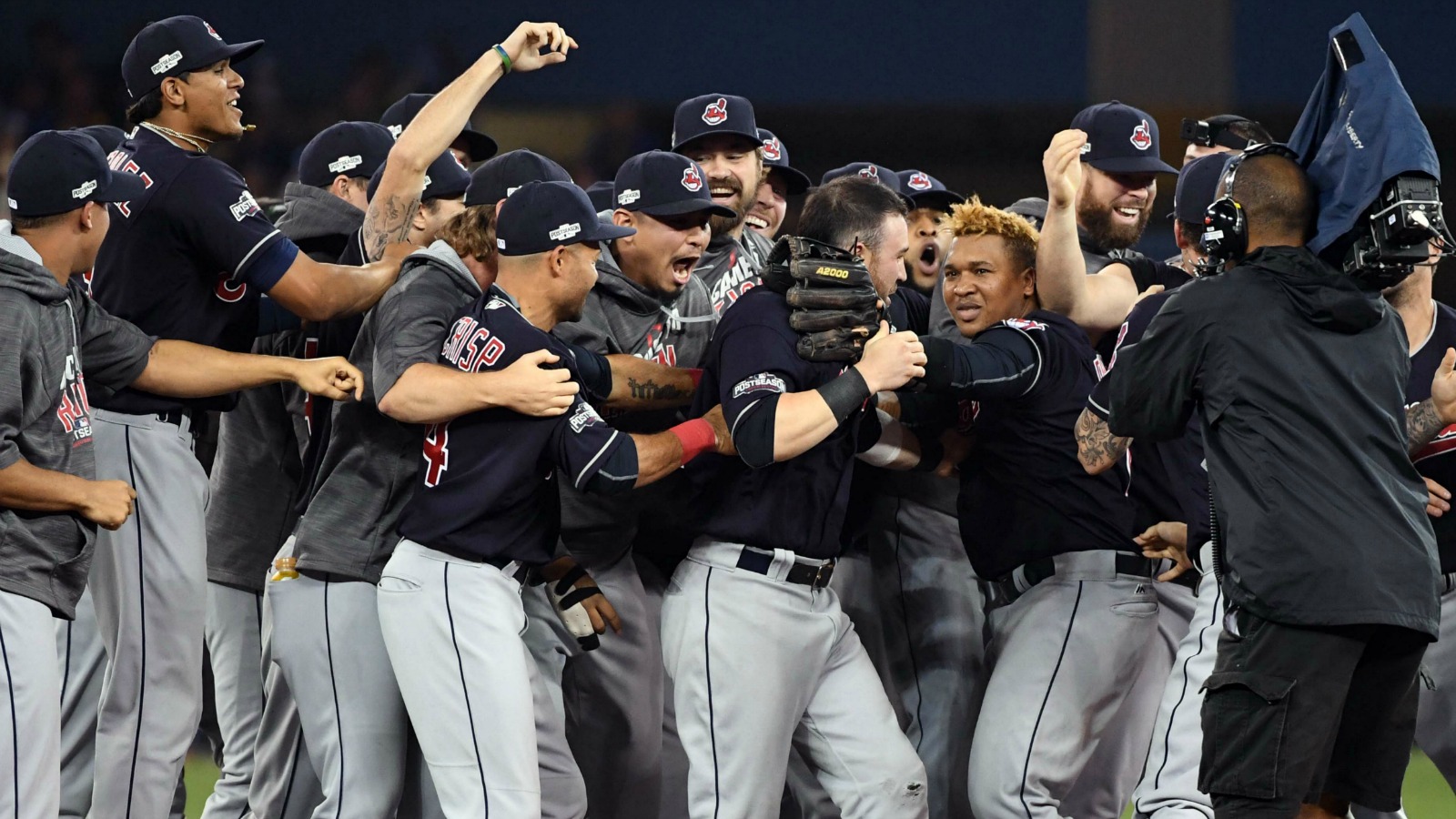Score one for revenue sharing.
The Indians, who ranked 28th in home attendance last season, reached agreement on a three-year, $60 million contract Thursday with free-agent slugger Edwin Encarnacion, according to major-league sources. The Athletics, who ranked 29th, also were prominent in the bidding.
I’m not suggesting that the low-revenue teams are on a level playing field with their high-revenue brethren — heavens no. The sport’s economic structure never will be like the NFL’s, not with local revenue playing such a prominent role. But in special cases, things like this can happen. And Encarnacion, it turns out, was a special case.
Good for the Indians. Good for the sport.
At one point this offseason, I wrote that the Indians might be in position to sign Encarnacion due to the extra revenue they generated by reaching Game 7 of the World Series and the recent addition of a new ownership partner, John Sherman.
Shortly after that, I was told by major-league sources that the Indians did not plan to change the way they operate due to their poor home attendance and other challenges they face in the Cleveland market.
As it turns out, the agreement with Encarnacion isn’t that much of a departure for the Indians, who signed free agent Nick Swisher for only $4 million less and Michael Bourn for $12 million less in the same 2012-13 offseason. But give the Dolan ownership credit. They still had to extend beyond their normal comfort level, and the breakdown in Encarnacion’s talks with the Blue Jays gave them the opening they needed.
Encarnacion never wanted to leave the Jays. But once he and his agent, Paul Kinzer, rejected the team’s four-year, $80 million offer, the landscape shifted dramatically.
Never mind that Encarnacion ranked second in the majors in home runs and sixth in OPS the past five seasons. His age — he will play next season at 34 — worked against him. So did the attachment of a qualifying offer and a number of other factors.
*The Jays surprised the Encarnacion camp by pivoting quickly to another free agent, Kendrys Morales, signing him for three years, $33 million.
*The new collective-bargaining agreement included smaller-than-expected increases in the luxury-tax threshold, limiting the spending power of the Red Sox and Yankees, both of whom otherwise might have pursued Encarnacion.
*Finally, the glut of right-handed hitters on the free-agent market left clubs with more affordable alternatives; expect the Rangers to grab one of those options, Mike Napoli, in the coming days.
In the end, Kinzer and Encarnacion lost $20 million in guaranteed money. Their deal with the Indians includes a $25 million club option that could raise the total value to the original $80 million the Jays offered. But what are the odds that the Indians will exercise that option for EE’s age 37 season?
It’s reasonable to suggest that Kinzer should have worked off the Jays’ initial offer, or at least figured out a way to keep them involved. But the Jays sure didn’t act like they wanted to stay involved. They made Encarnacion an offer they thought was fair, then — unlike the Dodgers, who remained engaged with Justin Turner and Kenley Jansen — moved on.
Encarnacion still came out OK; even if the Indians decline his option, he could sign with another club at a salary that still might get him within reasonable distance of $80 million over four years. What’s more, he landed with a more accomplished club, one that – at least on paper – is in position to repeat as American League champions.
If left fielder Michael Brantley returns after playing in only 11 games last season — a big if, it says here, due to his lingering right-shoulder issues — then the second-best offense in the AL will be that much better. And the pitching, without Carlos Carrasco and Danny Salazar able to start in the postseason, still was nearly good enough to help the Indians win the World Series.
Here is one possible lineup:
Jason Kipnis, L
Francisco Lindor, S
Brantley, L
Encarnacion, R
Carlos Santana, S
Jose Ramirez, S
Lonnie Chisenhall, L
Yan Gomes, R
Tyler Naquin, L
The rotation projects to start the season healthy. The bullpen will include Andrew Miller from the start. Maybe the Tigers will take a last gasp in the AL Central before disassembling. Maybe the Royals will stage a last hurrah with their large number of potential free agents. But remember, the Indians finished eight games ahead of the Tigers last season and 13½ ahead of the Royals. And the two other teams in the division, the White Sox and Twins, are rebuilding.
This is it, the Indians’ window to win their first Series since 1948. Santana and reliever Bryan Shaw are free agents after 2017, Miller after ’18. And while Carrasco is under control through ’20 and Corey Kluber through ’21, the two will pitch next season at 30 and 31, respectively. It would be a mistake to expect them to remain healthy and effective for the rest of their contracts.
Ownership endorsed the additions of catcher Jonathan Lucroy as well as Miller at the non-waiver deadline last season. Lucroy thwarted the plan by invoking his no-trade clause to Cleveland, but Miller cost $9 million per season and now Encarnacion will cost $20 million per, plus the 25th pick in the amateur draft. The Dolans certainly are not running from the fight.
Good for the Indians. Good for the sport.




